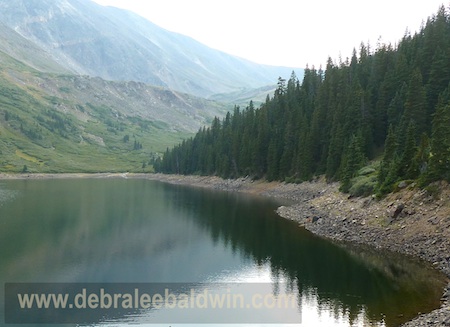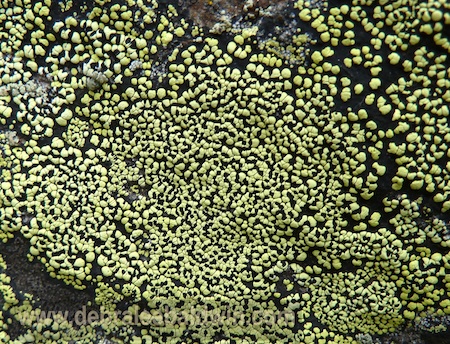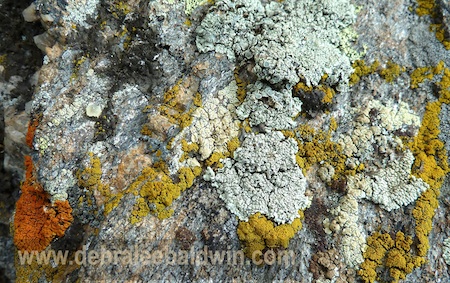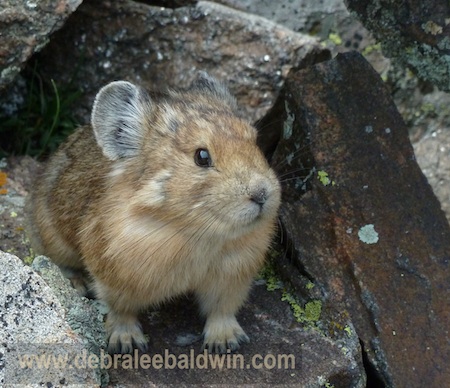
My husband and I had the lake in Colorado, at 11,000 feet elevation, to ourselves except for occasional hikers a mile away—colorful specks on a timberline trail whose voices carried in the thin air. While Jeff fished, although I wasn’t bored exactly, I began noticing lichens. I’m here to tell you, Rocky Mountain lichens are as impressive as lava flows.

According to Wikipedia, lichen is comprised of a fungus and a photosynthetic partner (usually green algae). Lichens occur in some of the most extreme environments on earth—arctic tundra, hot deserts, rocky coasts, and toxic slag heaps—as well as bare rock, walls and gravestones.

Lichens that are vulnerable to environmental disturbance may be used by scientists to assess air pollution, ozone depletion, and metal contamination.

These lichens looked fragile yet were cemented to the stones. In any case, I wasn’t enough of an environmental disturbance to detach them.

Sit still long enough, and wildlife forget you’re there. Squirrel-sized rodents that looked like guinea pigs popped in and out of the rocks, squeaking like dog toys. Our terrier went nuts whenever she heard a pika (also called coney or rock rabbit). In determined yet fruitless pursuit, she used four-paw drive to navigate the uneven terrain.

That evening, outside a rustic cabin, we cooked trout over an open fire. Deer kept returning to a nearby clearing, gazing at us as though we were from another world. Indeed we were.
